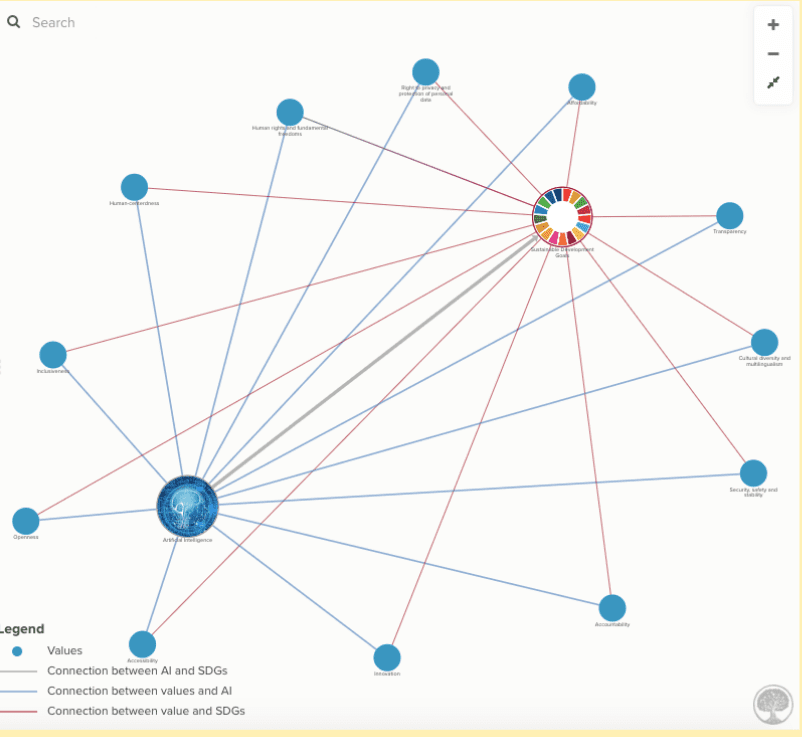The most recent Report on Sustainable Development Goals (SDGs) estimates that 6% of the world’s population is likely to continue living in extreme poverty by 2030, and least developing countries will most likely fail to meet their industrialisation targets. Against this backdrop, this week in New York, world leaders will discuss over 80 proposed acceleration actions for achieving the Agenda 2030. In discussing the need for an impetus to achieve SDGs by 2030, leaders also need to ask: How can we further leverage digital technology to accelerate the realisation of SDGs? Since Agenda 2030 is digital-shy, should we inject SDGs with a dose of ‘digital steroids’?
Unlike climate action and economic growth, Agenda 2030 does not include a dedicated goal for tech issues, as was the case with its precursor, the Millennium Development Goals. Technology is mentioned only in a handful of targets: access to the Internet (9c), scholarships (4b), empowerment of women (5b), and technology and science (17.8). The drafters of the Agenda 2030 successfully avoided the risk of ‘techno-solutionism’, the previously dominant view that digital technology is, per se, sufficient to address societal and development problems. However, this retracted approach does not reflect the reality of modern society – from remote villages to urban centers, all the way to individuals and society as a whole – digital technology plays a central role. Digital technology is the cross-cutting and invisible ‘18th SDG’ in many respects. The good news is that this in-built tension between the low prominence of digital issues in Agenda 2030 and their high relevance for today’s society provides the space for creative and effective solutions. This inspired the UN High-Level Panel on Digital Cooperation, set up last year by the UN Secretary-General, to outline a human-centered approach to our digital future. The Panel’s final report, published last June, proposes that ‘by 2030, every adult should have access to affordable digital networks’. It also called for digital inclusion that goes beyond the simple access to networks towards cultural, economic and educational inclusion, among others. In the race of the ‘last decade’ towards 2030, the international community can benefit greatly from a three dose-regimen of ‘digital steroids’. The timing is just about right. Firstly, better access to networks, smarter applications and new AI-based tools can accelerate the implementation of all SDGs. Even though some SDGs are more ‘digital’ such as SDG 4 (Quality Education) and SDG 3 (Good Health and Well-being), which have a correlation of 73% and 71% with digital technology, as revealed in a study conducted by Huawei and GeSI, there are hundreds of projects using digital tools for achieving SDGs. The mapping below (and also here) illustrates this trend. Click on a particular SDG button filtered on the top of the chart and catch a glimpse of the connection between digital technology and a relevant SDG target.Turning Agenda 2030’s ‘digital shyness’ into an opportunity
‘Digital steroids’ explained
Out of the 85 SDG Acceleration Actions presented this week, 20 relate to digital technology, and have been proposed mainly by governments and civil society. Tech companies account for only two submissions and are partners in five ‘digital’ acceleration actions. Prominent tech giants are missing from the picture. Mobilising the tech sector remains the main challenge in connecting the SDGs to a ‘digital steroids’ drip.
Secondly, higher quality data, and more of it, can improve how we monitor the implementation of SDGs. One of the key messages of the 2019 High-Level Political Forum (9 – 18 July) is that currently, two-thirds of the SDG indicators – the key tool for measuring the implementation of the SDGs – lack sufficient or up-to-date data.
The healthcare sector is the most advanced: it uses data for mapping disease outbreaks, comparing the effectiveness of treatment, and improving the understanding of health conditions. With the Ebola outbreak in West Africa, aggregated case data became crucial in understanding the trajectory of the virus and formulating a corresponding response. In Brazil, the healthcare startup market is rapidly growing, with enterprises helping to cut costs and use data analytics to optimise patient care.
Most other sectors need digital, or in this case data, ‘steroids’ to improve data collection and data analysis for monitoring the implementation of SDGs.
Thirdly, SDGs should become the guardrails for human-centric development of artificial intelligence. For example, by implementing SDG 5 (gender equality) and its related targets, engineers can ensure that AI does not perpetuate gender biases. Or, by adhering to the objectives of SDG 10 (reducing inequalities), AI would minimise the risk of disparities. Similar examples can be found for all the other SDGs.
By using SDGs as guardrails for AI developments, the tech industry can ensure that its work does not go against core human values and principles which underpin SDGs and the Agenda 2030. In addition, SDGs’ concrete targets and indicators can be particularly useful in operationalising the general and abstract values and principles into the daily reality of AI developers, tech industry, and policymakers. At the same time, SDGs would get a more prominent buy-in as a useful and practical tool for addressing one of the main challenges of our time: how to ensure that AI serves the core interests of humanity.
The illustration below shows how values such as affordability, inclusiveness, human-centredness and accountability (a total of 11 values), at the heart of the SDG framework, interconnect with AI.

These three sets of digital steroids – digital tools, use of data, and guardrails for AI development – can accelerate the implementation of SDGs. From being perceived as a matter of development assistance, the Agenda 2030 should become – as it is designed – an agenda for a sustainable future of humanity.
On this critical journey, this week’s SDGs Summit should take the next step on the path towards a human-centered digital future, as recommended by the UN High-Level Panel on Digital Cooperation. What the world needs is clear. The timing is right, and digital steroids are available.